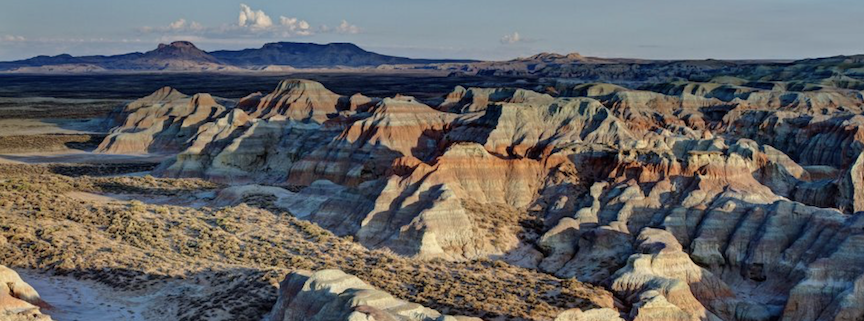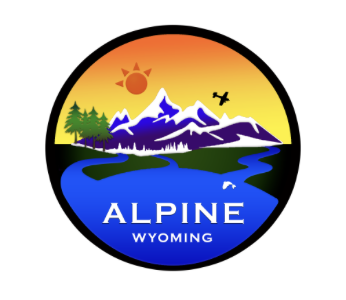By Marit Gookin
Lander Journal
Via-Wyoming News Exchange
LANDER — The Red Desert is an incredible resource for much of central and southern Wyoming. Full of wildlife, recreation destinations, grazing land, cultural sites, and beyond, it’s a beloved part of the state’s heritage and future.
The area is largely managed by the Bureau of Land Management’s Rock Springs Field Office; the BLM recently released a draft of a new resource management plan for the area, and the preferred alternative it selected has not been well-received by some Wyomingites.
Extra time was taken to allow for the state of Wyoming to create a task force that provided further recommendations on how to proceed – and the BLM has now finalized its decision.
“This is how conscientious, transparent land-use planning is supposed to work. The agency listened to local communities and acted in the public interest when deciding to protect the remarkable wildlife habitat and cultural sites of the Northern Red Desert and Big Sandy Foothills from oil and gas and other development,” commented Wyoming State Director for The Wilderness Society Julia Stuble.
However, not everyone agrees that this was a good decision or that it took into account the input the BLM received from Wyoming.
When the Bureau of Land Management released its proposed new Rock Springs resource management plan, the reaction from Wyoming was a strong one. Community meetings about the plan were often standing-room only, and government officials from the governor on down demanded that the BLM walk back its recommendation and do more to take into account the preferences of Wyomingites.
The agency agreed to work with a task force formed by Governor Mark Gordon.
The Rock Springs RMP is the plan that will guide the BLM’s management of the 3.6 million acres of land under the scope of the Rock Springs Field Office, stretching from the Colorado border all the way up to where the Red Desert meets South Pass near Oregon Buttes.
This land includes an incredibly intact sagebrush steppe ecosystem, popular recreation destinations, oil and gas resources and a wide variety of wildlife. It is broadly considered to be an important resource for ranchers, extraction companies, and wildlife conservationists of all stripes.
It selected a conservation-focused alternative for the new RMP, something which Wyoming Wildlife Federation Executive Director Joy Bannon said she’d never seen happen before.
Taking into consideration public comment before finalizing anything is part and parcel of most plans and changes coming out of the BLM and similar agencies. The general order of operations is that an agency will spend time developing several different alternatives, weigh various different factors and expert opinions in order to select its preferred alternative, and then send that information out to the public and offer a comment period.
Only after receiving and incorporating public comment can the preferred alternative actually go into effect – but the degree to which public comment was incorporated was inadequate in this case, according to some Wyoming officials.
“Since the BLM announced their draft RMP back in August of 2023, Wyoming’s state agencies, counties, industries, and stakeholders have all worked tirelessly to wrangle this document into a workable, legal, and durable land management plan. There still remains a considerable distance to cover to achieve this,” Gordon remarked in an October statement. “Moving from an untenable to an unworkable decision does not make their decision any more consistent.”
Following the release of the BLM’s record of decision finalizing the RMP on December 20, Wyoming Secretary of State Chuck Gray had an even more direct criticism of the agency and its plan.
“I am outraged by this outrageously wrong, slapped-together, rush-job from a radical, lame-duck, failed administration. This Record of Decision for the Rock Springs RMP continues to be disastrous for Wyoming’s core industries, and detrimental to the people of Wyoming. It is an unconstitutional abomination that infringes on the rights of the citizens of Wyoming.”
The BLM was actually overdue for a new RMP for the Rock Springs area. It was still operating off of an RMP from 1997 until this plan was finalized less than two weeks ago; BLM field districts are required to update their resource management plans once every 20 years. The scoping process for this plan started on-track in 2011, but ended up taking 12 years instead of the usual timeframe of several months. That means the BLM barely managed to be seven years, instead of eight, past its twenty-year timeframe by finalizing the plan at the very tail end of 2024.
“The finalization of the Rock Springs RMP is long overdue and the plan clearly reflects local residents, industries, and expert analysis in pursuit of the balance of multiple uses that the BLM was established to manage,” Wyoming Outdoor Council Program Manager Alec Underwood commented in a press release.
Underwood, who served on the governor’s task force concerning the plan, noted that the BLM’s final version of the RMP incorporates approximately 80% of the task force’s recommendations.
“This shows that the agency seriously listened to the input of Wyoming stakeholder groups, and tens of thousands of citizens who participated in the planning process.”
Conservation Lands Foundation Public Lands Policy Director Kara Matsumoto took a pragmatic perspective; the plan has already been finalized and the record of decision signed, she pointed out.
“It’s time to focus on putting the plan into action. After more than a decade of effort, this balanced plan provides much-needed certainty for local and national stakeholders whose input helped shape it.”




